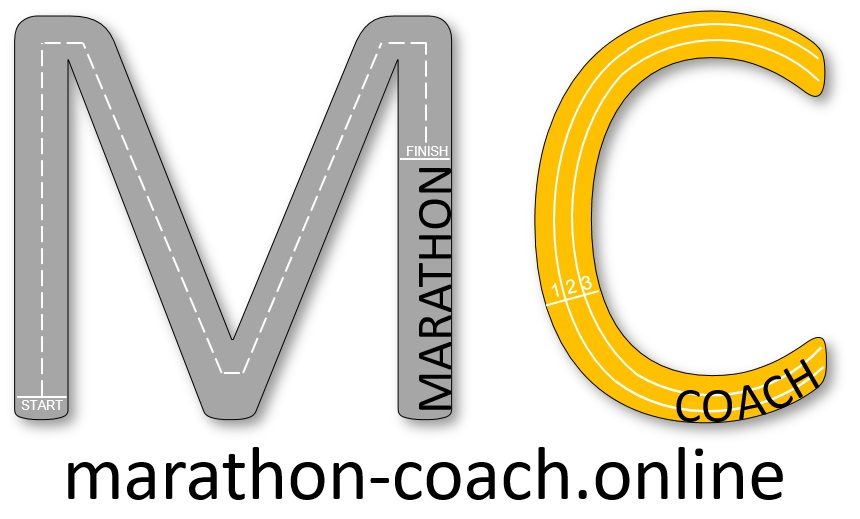Different running paces
Runners have different paces to choose from. Beginners tend to run too fast at the beginning of a run and then need to slow down drastically due to the oxygen deficit after a several minutes and may even end up walking. It is very important to warm-up slowly before picking up the pace, in a steady run for example, and it is as equally important to slow down to cool-down the body afterwards. It is important to understand the different running paces and the physiological benefit of each. The Threshold pace is a very important pace, as it improves running speed. Each week, only ten to fifteen percent of the weekly mileage should be run at threshold pace.
Physiologically, running at Threshold pace is linked with blood lactate concentration. It is called the “comfortably hard” pace and should be the pace a runner can run for one hour (between 10km and half marathon pace depending on your fitness level). Sometimes these sessions are called “Tempo runs”, when they include more anaerobic benefit. These sessions are very important, especially for the endurance runner who want to improve their performance.
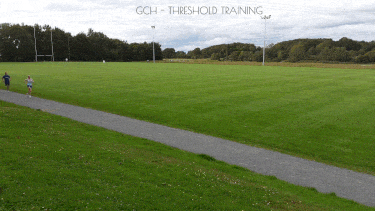
There are five different paces and each should be included in the different phases of a training plan:
1 – Endurance pace / Easy pace
2 – Marathon pace
3 – Threshold pace
4 – Interval pace
5 – Repetition pace
In addition, sprinters should work at a much faster than repetition pace, but their workouts are very specific and linked to the various different sprinting distances (100m, 200m and 400m).
Running Threshold pace
The threshold pace should only be ten to fifteen per cent of the total weekly distance. This type of session will be tough on the body and will need a few days of recovery before having another hard session or a long run. Improving the threshold is very beneficial for any marathon runners and will improve your marathon performance. These sessions improve the running economy and the running form.
There are 2 thresholds:
– The Aerobic Threshold when the lactate concentration in the blood is about 2 mmol/liter. Up to this point the increase in concentration is very slow.
– The Anaerobic Threshold when the lactate is about 3-4 mmol/liter. The increase in lactate concentration is now exponential. The body will not be able to use the lactate.
In between the two thresholds, we are able to use the lactate and should be able to maintain this effort for one hour. This is the threshold pace. Training above the Anaerobic threshold is more demanding and the recovery is much longer.
In the following chart, you can see details of threshold and the different training paces:
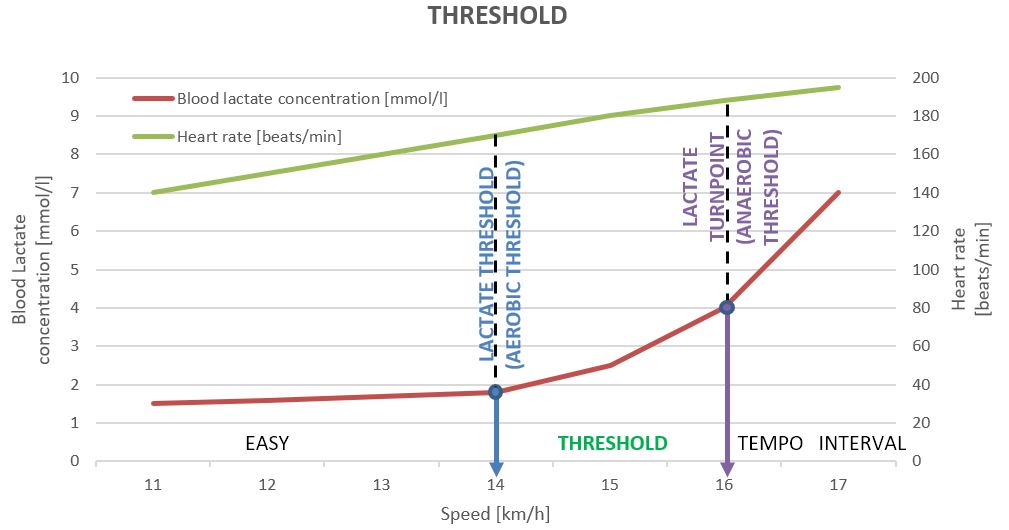
The benefit of the threshold pace is to improve the lactate threshold level. The goal is to reduce the lactate concentration at a given speed. We want to “move the curve to the right”. Increasing the lactate threshold will allow the endurance athlete to sustain a faster speed for one hour and improve their marathon pace.
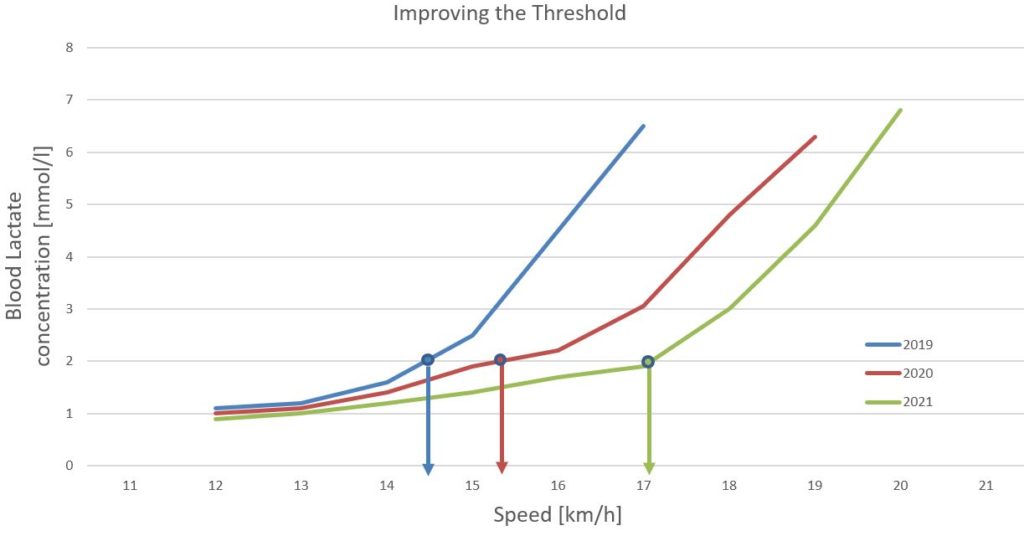
The benefit of the threshold pace is to improve the lactate threshold level. The goal is to reduce the lactate concentration at a given speed. We want to “move the curve to the right”. Increasing the lactate threshold will allow the endurance athlete to sustain a faster speed for one hour and improve their marathon pace.
The pace
The Threshold pace is run at approximately ninety percent of your maximal heart rate. The general table below determines it, based on your age:
| Age | Maximal Heart rate (Max HR = 220 – age) | Threshold pace (~ 90% max HR) |
| 20 years | 200 bpm | 180 bpm |
| 40 years | 180 bpm | 162 bpm |
| 60 years | 160 bpm | 144 bpm |
| 80 years | 140 bpm | 126 bpm |
This general table does not fit everyone. Depending on your fitness and your training history, your maximal heart rate may vary. You can go to a sport doctor to undergo a Cardiac stress test on a stationary bike or a treadmill to define your own maximal heart rate.
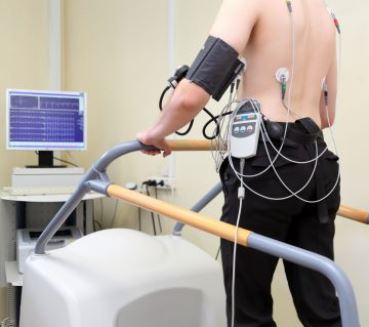
Untrained people will have their threshold at 80% of their maximal heart rate and top athletes can run up to nearly 95% of their maximal heart rate at threshold pace.
Another way to estimate your threshold pace is to define it with your current racing result. I suggest you race a 5km, and depending on your result, it defines your threshold pace:
| 5 km time | Threshold pace [/kilometers] | Threshold pace [/miles] |
| 15 minutes | 3’15”/km | 5’15”/mile |
| 20 minutes | 4’15”/km | 6’50”/mile |
| 25 minutes | 5’20”/km | 8’35”/mile |
| 30 minutes | 6’20”/km | 10’10”/mile |
These tables can be a good indication, but to get an accurate pace, it is important to get a blood lactate test in order to know both thresholds. Elite athletes are tested regularly throughout the season. Data from Paula Radcliffe’s entire career is available online, and it shows that she improved her threshold pace from 15km/h in 1992 to nearly 20km/h in 2003.
The duration
A Threshold pace session should last between forty minutes and one hour maximum. Each repetition should be between five and twenty minutes. The form deteriorates after twenty minutes and this may increase the injury risk. It is better to shorten the repetitions if the total duration is longer than twenty minutes.
For most of the runners, the longest session should be Forty to one hour. It will take beginners months before being able to run such a duration. For example, a beginner may start with a shorter session of 2 x 6 minutes, then longer sessions may be 3 x 20 minutes with a 3-minute rest in between each repetition for the most advanced athletes.
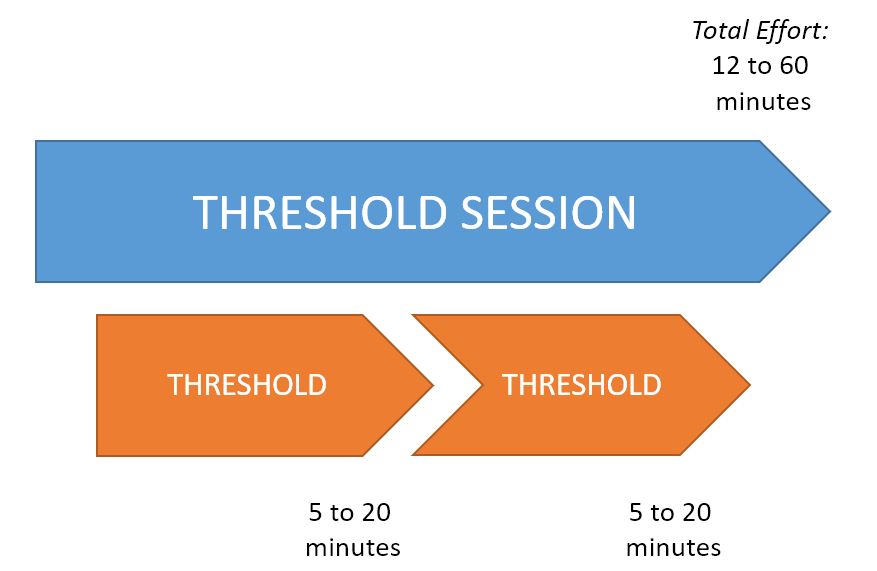
These training sessions should be built gradually and will need few days to recover. You will burn a lot of calories and the muscles will need time to recover. It is important to refuel well after these sessions. Personally, after these hard sessions, I take a protein shake to help me recover. Each session starts with a fifteen minute warm-up, and the session ends with a ten to fifteen minute cool-down.
Sage Canaday view
A great athelte and coach Sage Canaday prepared a short video concerning the Threshold pace:
Conclusion
Running at threshold pace is necessary to improve the speed of endurance athletes. It is important that you run these miles at the correct threshold pace. The sessions should be “comfortably hard”. Athletes should be able to converse in short sentences with their fellow runners. All miles should be at roughly ninety percent of your maximal heart rate. The main mistake made by many runners is to run these miles too fast. There is no benefit in running too fast, (running too fast may improve VO2 max, but not threshold), running too fast may even reduce the benefits of training and thus increase the recovery time / impact the following sessions.
The main benefit is to develop your lactate threshold, improve your running economy and running form.
The running form /mechanics need to be good during these runs. Concentrate on your foot stride, shoulders slightly forward, elbow slightly back. The form will not be so good at the end of the session, but if you get tired, concentrate on your form.
To enjoy these sessions, join a group or a friend with similar fitness / pace and ensure you can push each other, especially during the last couple of miles. These sessions will really improve your speed.
